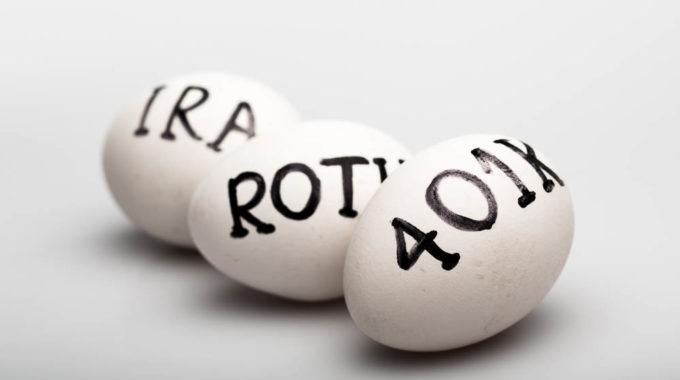
401(k) Plans: The Basics
Retirement plans established under Section 401(k) of the Internal Revenue Code, commonly referred to as “401(k) plans,” have become one of the most popular types of employer-sponsored retirement plans.
What is a 401(k) plan?
A 401(k) plan is a retirement savings plan that offers significant tax benefits while helping you plan for the future. You contribute to the plan via payroll deduction, which can make it easier for you to save for retirement. One important feature of a 401(k) plan is your ability to make pretax contributions to the plan. Pretax means that your contributions are deducted from your pay and transferred to the 401(k) plan before federal (and most state) income taxes are calculated. This reduces your current taxable income–you don’t pay income taxes on the amount you contribute, or any investment gains on your contributions, until you receive payments from the plan.
You may also be able to make Roth contributions to your 401(k) plan. Roth 401(k) contributions are made on an after-tax basis, just like Roth IRA contributions. Unlike pretax contributions to a 401(k) plan, there’s no up-front tax benefit–your contributions are deducted from your pay and transferred to the plan after taxes are calculated. But a distribution from your Roth 401(k) account is entirely free from federal income tax if the distribution is qualified. In general, a distribution is qualified only if it satisfies both of the following requirements:
- It’s made after the end of a five-year waiting period
- The payment is made after you turn 59½, become disabled, or die
Generally, you can contribute up to $18,000 ($24,000 if you’re age 50 or older) to a 401(k) plan in 2016 (unless your plan imposes lower limits). If your plan allows Roth 401(k) contributions, you can split your contribution between pretax and Roth contributions any way you wish.
When can I contribute?
While a 401(k) plan can make you wait up to a year, many plans let you to begin contributing with your first paycheck. Some plans also provide for automatic enrollment. If you’ve been automatically enrolled, make sure to check that your default contribution rate and investments are appropriate for your circumstances.
What about employer contributions?
Employers don’t have to contribute to 401(k) plans, but many will match all or part of your contributions. Try to contribute as much as necessary to get the maximum matching contribution from your employer. This is essentially free money that can help you reach your retirement goals that much sooner. Note that your plan may require up to six years of service before your employer matching contributions are fully vested (that is, owned by you), although most plans have a faster vesting schedule.
Should I make pretax or Roth contributions (if allowed)?
If you think you’ll be in a higher tax bracket when you retire, Roth 401(k) contributions may be more appealing, since you’ll effectively lock in today’s lower tax rates (and future withdrawals will generally be tax free). However, if you think you’ll be in a lower tax bracket when you retire, pretax 401(k) contributions may be more appropriate because your contributions reduce your taxable income now. Your investment horizon and projected investment results are also important factors.
What else do I need to know?
- Your contributions, pretax and Roth, are always 100 percent vested (i.e., owned by you).
- If your plan allows loans, you may be eligible to borrow up to one half of your vested 401(k) account (to a maximum of $50,000) if you need the money.
- You may also be able to make a hardship withdrawal if you have an immediate and heavy financial need. But this should be a last resort–hardship distributions may be taxable to you, and you may be suspended from plan participation for six months or more.
- Distributions from your plan before you turn 59½ (55 in some cases) may be subject to a 10 percent early distribution penalty unless an exception applies.
- You may be eligible for an income tax credit of up to $1,000 for amounts you contribute, depending on your income.
- Your assets are generally fully protected in the event of your, or your employer’s, bankruptcy.
- While your participation in a 401(k) plan has no impact on your ability to contribute to an IRA (Roth or traditional), it could impact your ability to make deductible contributions to a traditional IRA.
- Most 401(k) plans let you direct the investment of your account. Your employer provides a menu of investment options (for example, a family of mutual funds). But it’s your responsibility to choose the investments most suitable for your retirement objectives.
Copyright 2006- Broadridge Investor Communication Solutions, Inc. All rights reserved.
*Non-deposit investment products and services are offered through CUSO Financial Services, L.P. (“CFS”), a registered broker-dealer (Member FINRA/SIPC) and SEC Registered Investment Advisor. Products offered through CFS: are not NCUA/NCUSIF or otherwise federally insured, are not guarantees or obligations of the credit union, and may involve investment risk including possible loss of principal. Investment Representatives are registered through CFS. The Credit Union has contracted with CFS to make non-deposit investment products and services available to credit union members.
CFS representatives do not provide tax or legal guidance. For such guidance please consult with a qualified professional, information shown is for general illustration purposes and does not predict or depict the performance of any investment or strategy. Past performance does not guarantee future results.